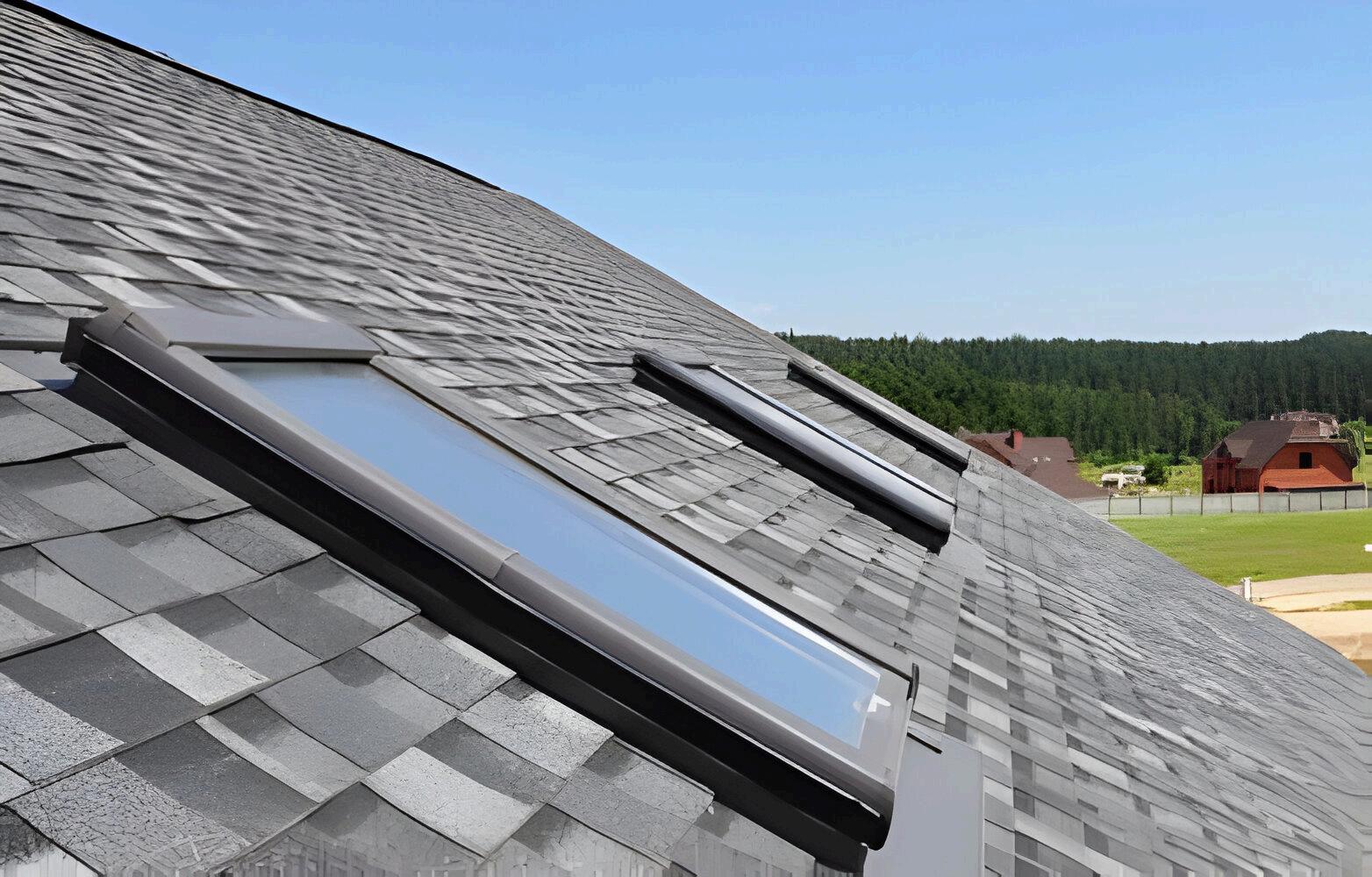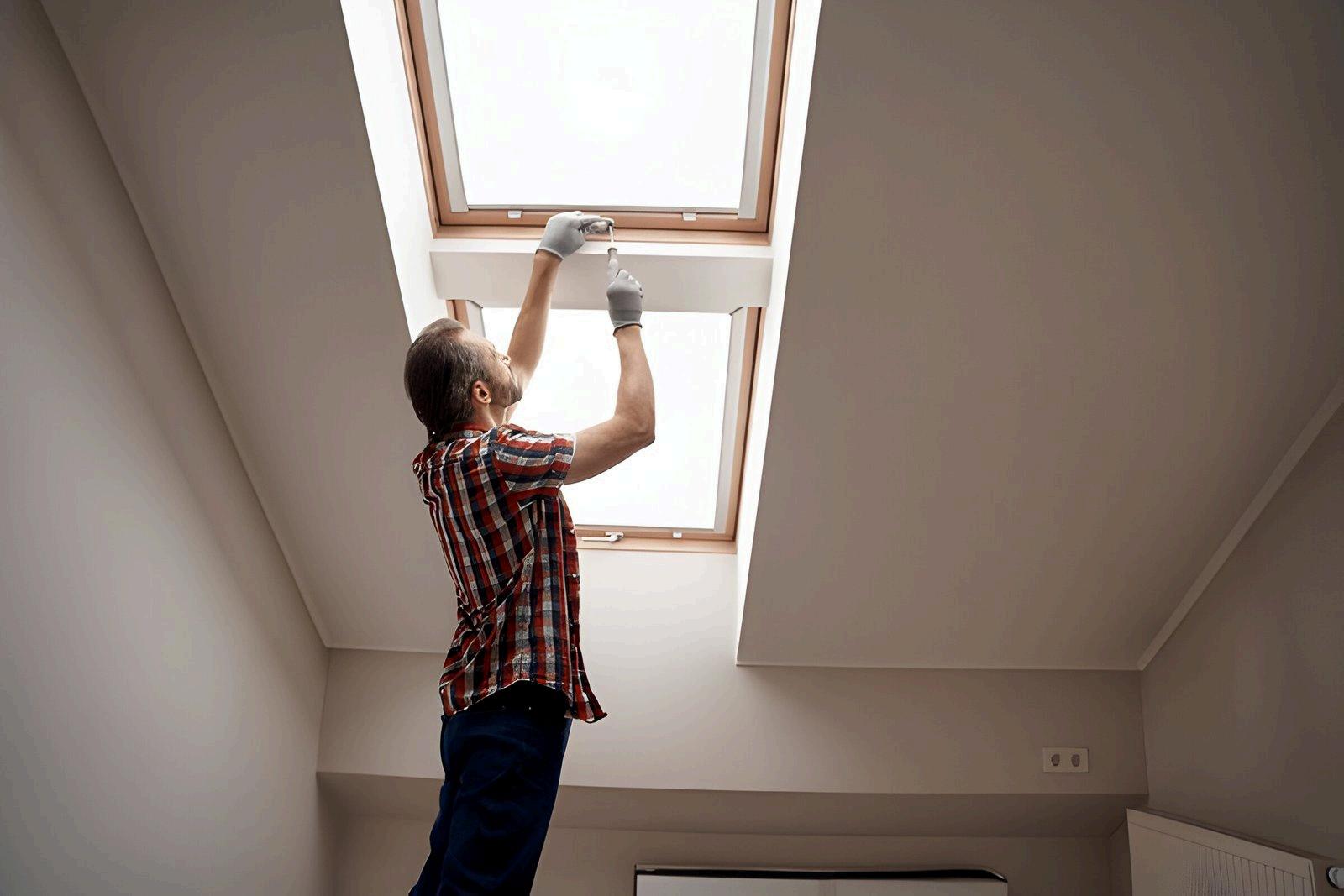




Skylights are roof-mounted windows that allow natural light to penetrate indoor spaces. Their primary benefits include increased daylight and potential energy savings from reduced artificial lighting. However, their condition and design also influence indoor air quality.
Factors such as ventilation, temperature regulation, and moisture management are all affected by the type and placement of skylights.
Skylight Repair Service AV Roofing ensures that your skylights are properly maintained, enhancing energy efficiency and indoor air quality while preventing issues like leaks or poor ventilation caused by damaged skylights.

Skylights are roof-mounted windows that allow natural light to penetrate indoor spaces. Their primary benefits include increased daylight and potential energy savings from reduced artificial lighting. However, their condition and design also influence indoor air quality.
Factors such as ventilation, temperature regulation, and moisture management are all affected by the type and placement of skylights.

Natural light through skylights can enhance indoor air quality by reducing the reliance on artificial lighting, which can emit heat and pollutants. Sunlight also has natural antibacterial properties, helping to inhibit the growth of mold and bacteria. Yet, excessive direct sunlight can lead to overheating and increased indoor temperatures, potentially creating an environment conducive to mold growth if not properly managed.



One of the primary benefits of operable skylights is their contribution to ventilation and airflow. Skylights that can be opened allow fresh air to enter, which helps to dilute and remove indoor pollutants such as volatile organic compounds (VOCs) and carbon dioxide. Effective skylight ventilation supports cross-ventilation, enhancing overall air quality. Conversely, fixed skylights do not offer these benefits, emphasizing the need for thoughtful design and placement to ensure adequate ventilation.

Temperature control is a crucial aspect of maintaining good IAQ. Skylights can significantly affect indoor temperatures by allowing solar heat to enter the space. During colder months, skylights can reduce heating needs by harnessing passive solar gain. However, during warmer months, they can increase cooling loads, leading to higher indoor temperatures and potentially affecting IAQ if temperatures become too high. Using skylights with appropriate glazing and shading options can help manage temperature fluctuations and maintain a stable indoor environment.

Humidity control is vital for preventing mold and mildew, which can adversely affect IAQ. Skylights can assist in managing humidity by facilitating air exchange and reducing moisture buildup. However, improper installation or maintenance issues, such as leaks, condensation, or skylight seal damage leading to mold growth, can result in excessive moisture that promotes mold formation. To prevent these issues, ensure that skylights are well-sealed, insulated, and maintained to avoid water intrusion and condensation problems.

The materials used in skylight construction can impact IAQ. Older skylight systems may use sealants or adhesives that emit volatile organic compounds (VOCs), which can degrade air quality. Modern skylights often utilize low-VOC materials, which are less likely to impact IAQ negatively. Additionally, the choice of frame material— whether wood, aluminum, or composite—can affect thermal performance and moisture resistance, influencing overall air quality.

The design and placement of skylights are critical to their effectiveness in enhancing IAQ. Skylights should be positioned to maximize natural light while minimizing excessive heat gain. Northfacing skylights generally provide diffuse light without significant heat gain, making them ideal for maintaining a comfortable indoor temperature. Proper sizing and placement, along with integration into a broader ventilation strategy, are essential for maximizing the benefits of skylights and ensuring they contribute positively to IAQ.



Regular maintenance is key to ensuring that skylights continue to support good IAQ. Over time, skylights can accumulate dust and debris, which can obstruct light and impact ventilation. Routine cleaning of skylights, along with inspections for leaks, cracks, or other damage, is essential to maintaining their efficiency. Ensuring that skylight seals are intact and that any automated systems function properly will help prevent issues such as water intrusion and condensation, which can compromise IAQ.

Skylights can have a profound impact on indoor air quality through their effects on natural light, ventilation, temperature, and humidity. While they offer significant benefits, such as enhanced daylight and improved air circulation, their condition and design must be carefully managed to avoid potential drawbacks. By considering factors such as skylight design, material choices, placement, and maintenance, it is possible to optimize their benefits and create a healthier, more comfortable indoor environment. Understanding the interplay between skylight conditions and IAQ can lead to better-informed decisions and improved living or working spaces.


